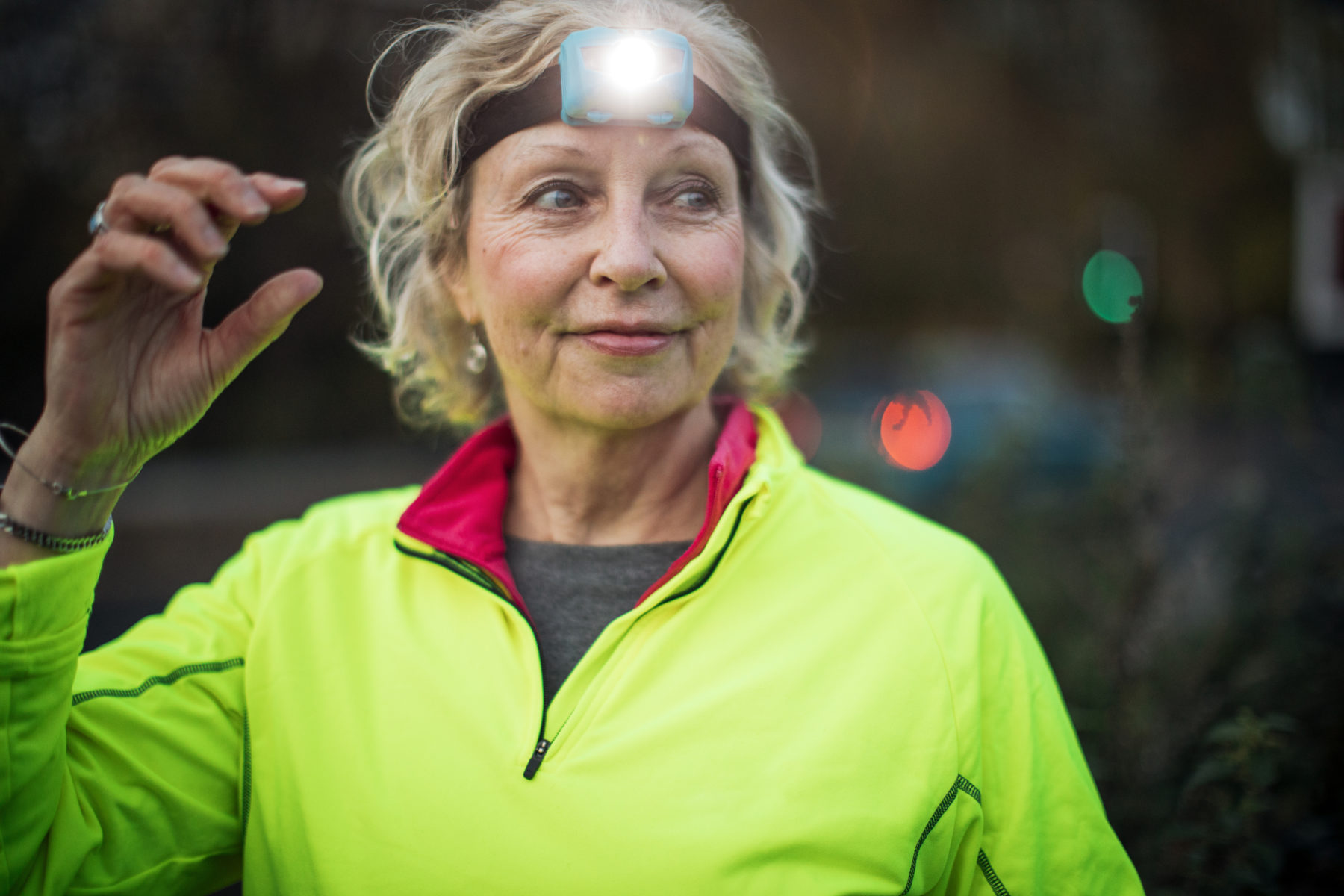Getting out for a run delivers a lengthy list of physical and mental health benefits. If you’re lucky enough to live in a pedestrian-friendly neighborhood, or nearby a big park or accessible greenway, you can just throw on your gear and jog out the front door, with miles of routes at your disposal. For everyone else, going for a run requires a bit more preparation. Here are some tips to get started.
Avoid High-Traffic Times
If you’re stuck running along roads — especially if sidewalks are hard to come by — schedule your workouts around high-traffic commute times, suggests Stephanie Cornyn, general manager of Big River Running Company. By getting out early in the morning or after the afternoon rush hour, you’ll have fewer cars to contend with and also avoid potentially distracted, dangerous commuters driving on autopilot.
Run On the Left Side of the Road
Research published in the Accident Analysis & Prevention journal has proven that running on the left side of the road, into traffic, reduces your likelihood of fatalities or injuries by 77 percent. Doing so allows you to see cars coming your way, so you can run more defensively (make eye contact with drivers, jump out of the way if needed, etc).
If your route takes you along a road with hills or turns that cause poor visibility of oncoming traffic, you may need to momentarily run on the right side to better see what’s ahead. Just be sure to switch back to the left side of the road as soon as possible.
Use Your Ears
Your ears are an important tool for staying safe along less pedestrian-friendly routes. Zoning out to music or a podcast isn’t a great idea; if you must listen to something, invest in a pair of bone-conducting headphones, such as Shokz, that allow you to hear ambient noise, Cornyn suggests.
Be Visible
High-visibility reflective gear is a must if you’re running in the dark, no matter where your route takes you. Luckily, there are tons of options these days, and any running store should be able to help you figure out the best gear to fit your needs.

Use a headlamp for dawn, dusk, and night runs.
“You don’t have to go with bright yellow or orange. A lot of athletic clothing now incorporates touches of high visibility reflectivity,” Cornyn said. “Shoes also now have reflectivity. There are options with 360-degree reflectivity, so cars will be able to see you from all angles. You can also layer in reflective shoelaces or clip-on lights that can be attached to your ankles, shoes or wrists.”
A headlamp is also a good idea for any dawn, dusk, or after-dark running.
Research Your Route
Apps such as Strava show heat maps of routes other runners frequent and may give you a good idea of doable options nearby, Cornyn says, adding that joining a local running group can also provide you with loads of local intel, not to mention some new running buddies.
Before trying out a new route on foot, Cornyn suggests driving it first to get a feel for the terrain and what to expect. You can also plug it into Google Maps Street View to see what the roads look like, assess sidewalk options, and discover other useful information.
Be Patient
Above all, when getting your footing in a new-to-you area, be patient and accept that your first runs in an area may not be as speedy as you’re used to. It takes time developing that sense of familiarity with a route.
“When I first moved to St. Louis, I came from an area where I knew my running paths and didn’t have to think about it,” Cornyn said. “I started out getting comfortable with just one short route, just 1.5 to 2 miles. Then I would go a little bit further to test it out, making note of whether I liked the route or not. I expanded my comfort zones in slow increments, giving myself time to know the roads and where to expect cars, so I could react if needed. Before long, I had a number of routes in my back pocket.”
It can also help to think of learning an area by foot as an opportunity to experience your neighborhood in a fresh way — you never know what new favorite routes you’ll discover.
Author: Stephanie Zeilenga is a regular contributor to Terrain Magazine.


Leave A Comment